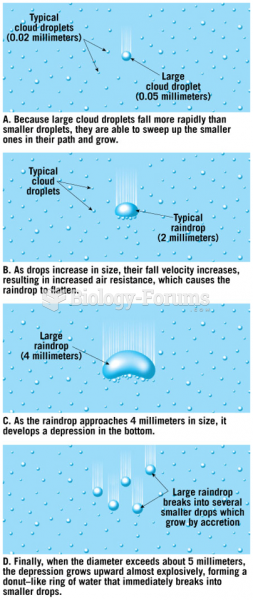|
|
|
When blood is exposed to air, it clots. Heparin allows the blood to come in direct contact with air without clotting.
Recent studies have shown that the number of medication errors increases in relation to the number of orders that are verified per pharmacist, per work shift.
Inotropic therapy does not have a role in the treatment of most heart failure patients. These drugs can make patients feel and function better but usually do not lengthen the predicted length of their lives.
About 600,000 particles of skin are shed every hour by each human. If you live to age 70 years, you have shed 105 pounds of dead skin.
Studies show that systolic blood pressure can be significantly lowered by taking statins. In fact, the higher the patient's baseline blood pressure, the greater the effect of statins on his or her blood pressure.
 Successful agriculturalists must have a basic understanding of landscape structure and process. Thes
Successful agriculturalists must have a basic understanding of landscape structure and process. Thes
 Deviancy training is a process by which antisocial peers encourage antisocial talk among friends, ...
Deviancy training is a process by which antisocial peers encourage antisocial talk among friends, ...





